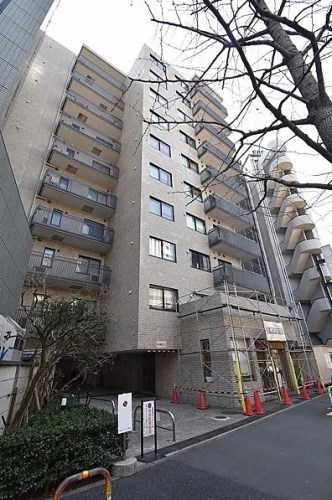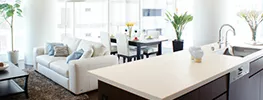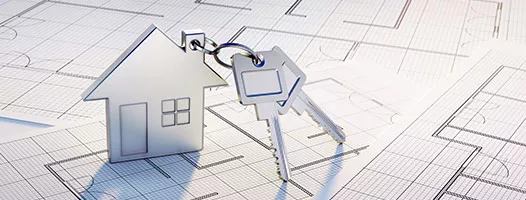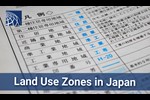Buying Land and Building a House on it - To Sort Out the Conditions for Building a House

When purchasing land and building a custom-built home, it is important to first consider where and what kind of house you would like to build, and what your ideal house would look like. Let's start by sorting out your conditions, such as the area where you want to live, the surrounding environment, the size of the house and desired floor plan, and the budget you can allocate for buying land and building a house.
To get an idea of where and what kind of house you want to build
First, decide on the area where you want to live, how big a house you want to build, and how much you can afford to spend, and use the following points to sort out your conditions.
1. Conditions for Land Selection (Surrounding Environment, Location)

Once you have decided on a broad area, such as the ward, city, or train line where you want to live, make a list of the conditions you are looking for in a location.
・Commuting time
・Convenience of transportation, walking time to the nearest station, bus access
・Convenience of shopping, such as supermarkets
・Availability of nearby facilities such as public parks, medical facilities, etc.
2. Conditions for Housing

・Floor plan and size
In Japan, a floor plan is generally expressed as LDK + number of rooms, so it is a good idea to imagine that the living room and dining room should be at least ○㎡, and how many rooms of ○㎡or more are necessary for the number of family members.
The below table shows a guide to the total floor area of a house in Japan. Future family structure should also be taken into consideration.
| Family structure | Floor plan | Size |
| 2 people | 1〜2LDK | 50~75㎡ |
| 3 people | 2〜3LDK | 60~100㎡ |
| 4 people | 3〜4LDK | 70~125㎡ |
| 5 people | 4〜5LDK | 90~150㎡ |
According to the Ministry of Land, Infrastructure, Transport and Tourism's “Basic Plans for Housing,” the standard living area for an affluent lifestyle is “25m2 (approx. 7.6 tsubo) x number of household members + 25m2”; for a family of 4, this is “25m2 x 4 people + 25m2 = 125m2.
・Image of the house you would like to build
Wooden, steel-framed, reinforced concrete, 1-story, 2-story, 3-story, with basement, etc.
・Do you need a garden?
・How many car parking spaces do you need?
3. Cost and Market price

When buying land and building a house (custom-built house) on it, you will have to pay “Land purchase costs,” “Construction costs,” and other expenses.
・Land purchase cost
A large proportion of the cost for building a house is the cost of purchasing land. Check the price quotations for land in the neighboring areas in advance to get an idea of the cost. If there are ready-built houses for sale, it is a good idea to visit them to get an idea of the land cost, construction cost, and house size.
・Construction cost
The construction cost of custom-built houses varies depending on the region, size, and construction company, but according to the 2023 Flat 35 user survey, the national average for housing area is approx. 125.9m2, and the national average for custom-built houses is approx. 119.5m2, with a national average construction cost of JPY38.61million. In general, for a custom-built house with a floor area of 100m2 to 120m2, the most common construction cost is in the range of JPY20–30million, and it is possible to build a high-quality custom-built house for JPY40million or more.
For more information, please visit Buying Land and Building a House on it - Selecting a Construction Company and Construction Costs.
・Other expenses
In general, it is a good idea to consider the total cost of a custom-built house to be around 10~12% of the total amount of the “purchase price of the land plus the construction cost of a house”. For example, if a JPY30million custom-built house is built on a JPY50 million piece of land, the calculation is simply 10-12% of JPY80 million, or around JPY8-9.6 million for other expenses.
4. Financial Planning

Consider your approximate budget while examining the estimated cost. Make a financial plan by comprehensively considering how much you can prepare your own funds and how much you can afford to repay each month without difficulty.
If you are planning to take out a housing loan, check how much you can borrow from the bank. For more details, please refer to the explanation in “Maximum Borrowing Amount for a Housing Loan in Japan”.
If you wish to obtain financing for the purchase of land and the construction of a house, you must choose a financial institution that offers housing loans available for the purchase of land and the construction of a custom-built house.
Generally, housing loans are not available for the purchase of land only, but if you are purchasing land on the assumption that you will build a house, you can borrow for the cost of the land and building a house on it by submitting plans for the house to be constructed and an estimate of construction costs along with the land purchase contract.
For more information, please visit Costs of Buying Land + Building a House on it and Housing Loan.
Here is the process for purchasing land, building a house, and paying for them.
The house construction will proceed smoothly if you proceed with the land search and selection of a construction company in parallel and share the image of the house you want to build with the construction company. Before purchasing land, it is recommended that you have a construction company survey the land to see if the desired house can be built.
After purchasing the land, a construction contract is concluded with the construction company, and the construction work begins. Since the housing loan is executed after the house construction is completed, if you wish to obtain financing for the land payment and construction payment as well, you need to select a financial institution that offers "Land advance loan or "Bridge loan". It is a good idea to proceed with the selection of financial institutions from the timing of land search.
Process of land purchase, house construction, and payment for them


- Apartments & Houses for Sale in Tokyo
- Listings of apartments, condominiums, and houses available for purchase in Tokyo.


















